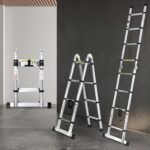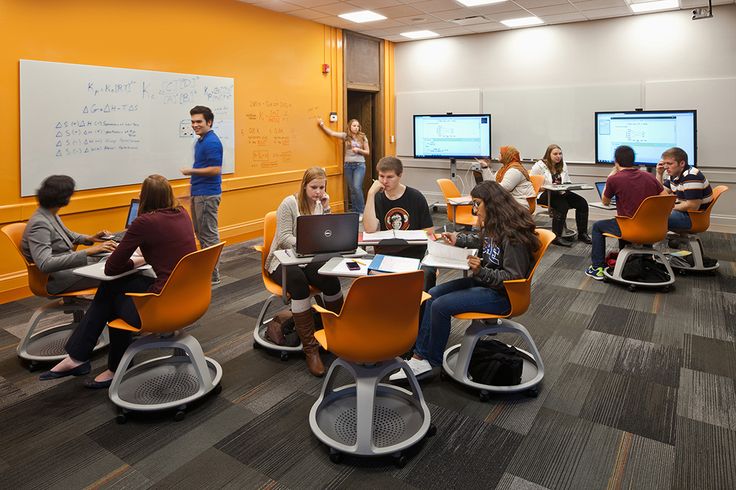The concept of active learning spaces is changing the manner in which we approach learning and interaction. The days of strictly lined rows of desks, and one teacher at the front of the classroom are long gone. Educators today are conscious of the fact that collaboration, creativity and critical thinking is not merely a matter of innovative teaching pedagogies but a matter of movement, interaction and flexibility as well.
In a classroom, the students can move to quiet workstations without any disruption. Imagine picture furniture that can be utilized in many activities and that will encourage comfort and efficiency. The requirements in the development of such dynamic environments include ergonomic and adjustable furniture. It gives students the power to be self-directed in the learning process in a manner that is impossible to achieve under the traditional environment.
We will get to know the reasons why active learning locations are becoming more important today, compare them to traditional classrooms, explore the possibilities of ergonomically friendly products that can meet the needs of learners, discuss the possibilities of flexible furniture that will make any educational environment a vibrant place to learn.
The Importance of Active Learning Spaces
Learning spaces are an important element of contemporary learning. They make the profile passive listening to active listening. This change promotes involvement, group work, and critical thinking by the students.
Learners in these settings engage more actively with both other learners and instructors. Teamwork is also second nature since portable furniture will make it easy to hold impromptu conversations and brainstorms.
In addition, active learning facilitates information retention. When learners have direct physical interaction with their environment, they tend to retain things within a long term memory.
Different types of learning are also facilitated in these spaces. Regardless of the practical projects or online collaboration tools, every student will be able to find the approach that will appeal to them.
These spaces also accommodate different types of learning. Whether it involves practical projects or online collaboration tools, every student can find an approach that suits them best, supported by functional classroom furniture.
Traditional vs. Active Learning Spaces
Conventional learning environments usually restrict students to strict rows of seats. Such an arrangement restricts motion and contact. Students are standing up with eyes fixed to a teacher or a screen.
Active learning situations, on the contrary, promote flexibility. The desks can be moved around in order to work or discuss in groups. The chairs have been decorated in a comfortable way so that one can concentrate longer without becoming tired.
The ambience in working areas is electric. Students do not passively listen but rather talk. They also work on the same problems, improving the critical thinking ability.
In addition, technology fits perfectly in these fields. Creativity and innovation is done through interactive boards and collaborative tools.
The learner-centered learning environments focus on student needs rather than traditionalist ideologies. Education is no longer about delivery of information, it becomes a life experience that arouses inclusive learning and interest.
Ergonomic Furniture for Active Learning
Active learning environments are based on ergonomic furniture. It works in favor of a variety of learners as well as encouraging comfort and attention.
Adjustable chairs enable students to locate the most comfortable seats. Such flexibility decreases the physical load, which allows more time to be spent on practical actions.
Flexible desks promote cooperation and innovation. They are readily reconfigurable to group work or individual study, which creates a feeling of community.
The addition of the sit-stand choices also gives strength to the learners. These desks allow students to sit and stand according to the levels of energy during the day.
Comfort is not the only goal of ergonomics, but also cognitive function. Productivity and retention can be enhanced by providing an effective space that allows one to move around without distraction during an active learning environment.
Ergonomic solutions are also beneficial in investing in the health and academic performance of the students.
Adaptable Furniture for Active Learning
Flexible furniture is a revolution in the active learning setting. It enables teachers to reconfigure the spaces within a short time, which encourages collaboration and interaction among the learners.
Look at modular seating, which is movable and reconfigurable. This flexibility can be used to support group work, discussions or individual study. The right set up will make classes vibrant learning environments.
Another nice addition is the standing desk. They stimulate activity and enhance concentration in classes. The students would be able to alternate between sitting and standing to maintain the energy levels.
Multi-functional tables also have many applications. They are able to support various activities such as science experiments, art projects among others.
The addition of such elements as whiteboard surfaces on desks contributes to increase the flexibility even more. Brainstorming is done in the workspace of students without the need of other materials.
Investment in flexible furniture allows schools to provide a lively environment in which students can learn using different teaching strategies to feel comfortable. This dedication promotes creativity and innovation that is very critical in contemporary education.
Implementation Strategies for Active Learning Spaces
Active learning spaces cannot be created without careful planning and implementation. Begin by determining the needs of your immediate context of learning. Engage teachers, students and administrators in dialogues to get varied views regarding functionality.
Look at step-by step implementation. Start with a pilot program that involves the use of ergonomic and adjustable furniture in some of the classrooms. This will enable real-time responses and changes prior to a larger expansion.
Training is crucial as well. Conduct professional development training to educators aimed at training them on the use of new furniture in their instructional methods. Reciprocate best practices through staff cooperation.
Furthermore, monitor the budget limitation and consider grants or collaboration with local companies that may want to fund educational projects. An investment in quality furniture can be expensive at the time of incurring costs, but can pay out in form of a great long-term payoff.
Anonymously assess the success of such changes with the help of surveys or observation. Flexibility must not be reduced to furniture; be willing to change pedagogical practices in response to what students like, and feel comfortable with.
Through proper planning, schools can be able to convert the traditional learning space to the dynamic ones which facilitate interaction, creativity and overall success among students.












Leave a comment